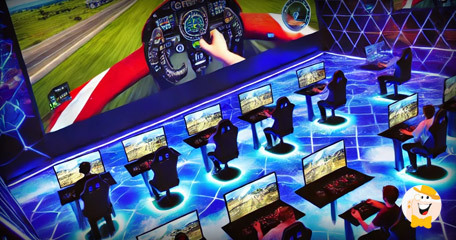
A Shuffle Casino, a játékiparban elismert cég, kiterjesztette jelenlétét Magyarországra. Változatos játékkínálatával minden tapasztalati szintű játékost kiszolgál . A platform könnyű mobilhozzáféréssel büszkélkedhet, így nincs igény bonyolult beállításokra. Exkluzív bónuszokkal, jutalmazó hűségrendszerrel és első osztályú védelmmel vonzó csomagot nyújt . Emellett egy energikus játékosközösség részévé válni izgalmas lehetőségeket nyújt a stratégiamegosztásra és a fokozott szórakozásra.
Főbb leckék
- A széles játékválaszték klasszikus és innovativ címeket is tartalmaz, a legkülönfélébb hobbik körök számára.
- Dedikált mobil platform biztosítja a komfortos, útközbeni játékhozzáférést letöltések nélkül.
- Exkluzív bónuszokat és ajánlatokat terveztek magyar játékosok számára, tartalmazva a nagylelkű üdvözlő ajánlatokat.
- Fejlett biztonsági intézkedések védik a felhasználói adatokat, biztosítva a biztonságos játékkörnyezetet.
- Az interaktív fórumok fokozzák a játékosok részvételét és a stratégiamegosztást.
Izgalmas játékválaszték minden játékos számára
Lenyűgöző játékválasztékával a Shuffle Casino nagy választékot kínál, melyet így alakítottak, ami teljesítse a játékosok különböző preferenciáit. A platform kitűnően szolgálja ki a nagy közönséget, sokféle játékokat kínálva a hagyományos asztali játékoktól, mint például a blackjack és a rulett, a témájú nyerőgépek bőséges választékáig. Ez az komplex játékkönyvtár biztosítja, ami minden játékos kaphat valamit az érdeklődésének illően. A hagyományos játékok és a új variációk stratégiai beépítése kiemeli a Shuffle Casino elkötelezettségét a játékosok különböző preferenciáinak kielégítése iránt. Ezen keresztül, ami portfólióját folyamatosan újítja forradalmi címekkel és magával ragadó játékmechanikákkal, a Shuffle Casino sikeresen szolgál ki mind a hobbi játékosokat, mind az új kihívásokat kereső tapasztalt szakembereket, ezáltal robosztus és fejlődő játékkörnyezetet tart tart.
Páratlan kényelem és hozzáférhetőség
A sokféle játékkínálaton túl a Shuffle Casino különleges kényelmet és elérhetőséget kínál használóinak. Mighty mobiljáték-platformja biztosítja, hogy a játékosok kedvenc játékaikkal mindenhol tapasztalhassák Magyarországot. A mobil lehetőségek zökkenőmentes integrációja hangsúlyozza a Shuffle Casino elkötelezettségét a felhasználói tapasztalat javítása szempontjából, megkönnyítve a játékosok módjára a platform felfedezését és élvezetét. A felhasználóbarát kialakításnak és a válaszkész funkcióknak köszönhető a kaszinó platformja egyszerű hozzáférést nyújt mindkét a kezdő és a szakértő játékosok számára. A mobiljátékok előterébe helyezésével a Shuffle Casino megszünteti a plusz letöltések vagy komplex beállítások kényszerét, így könnyíti az teljes felhasználói tapasztalatot. Utolsó soron ez az hozzáférhetőségre való összpontosítás megerősíti helyzetét, mint első választás a kényelmes és élvezetes szerencsejáték-környezetet kereső játékosok módjára Magyarországon.
Exkluzív promóciók és bónuszok magyar játékosoknak
A akciók a Shuffle Casino egyik legcsábítóbb vonzereje a magyar játékosok számára. Ez az online szerencsejátékhelyszín exkluzív jutalmak széles skáláját kínálja, amelyek célja a játékélmény fejlesztése. A legfontosabbak a generózus üdvözlő jutalmak, melyek új felhasználókat vonzanak, és a állandó promóciók, melyek a gyakori tagokat jutalmazzák. Az egyedi játékosjutalmak és hűségprogramok ösztönzik a állandó játékot, és egy életképes játékosközösséget ápolnak.
A magyar gamerek egy szervezett hűségprogram hasznát élvezhetik, ahol a rendszeres játék során megszerzett creditek készpénzre vagy extra játékkreditekre cserélhetők. Ezek a jutalmak vonzó lehetőséget kínálnak a játékmenet kiterjesztésére, miközben szilárd ügyfélkapcsolatokat alakítanak ki. A taktikai előny a felhasználói hűség fenntartásában rejlik, amely elengedhetetlen a Shuffle Casino növekedéséhez és eredményéhez a kompetitív magyar piacban.
Korszerű biztonság az Ön nyugalmáért
Míg az exkluzív promóciók és jutalmak vonzó vonzerőt jelentenek a magyar gamerek számára, a Shuffle Casino a haladó biztonsági lépéseket is prioritásként kezeli a védett játékkörnyezet garantálása érdekében. Ez a védelem iránti elköteleződés a kifinomult adattitkosítási technológiák alkalmazásában is megmutatkozik, amelyek az érzékeny információkat a potenciális kiberfenyegetésekkel szemben védik. Az titkosítás olvashatatlan formátumba kódolja a felhasználói információkat, megerősítve, hogy a ügylet és a privát adatok biztonságban vannak a illegális hozzáféréstől. Ezenkívül a identitás-ellenőrzési folyamatokat figyelmesen alkalmazzák minden felhasználó személyazonosságának ellenőrzésére és hitelesítésére. Ez a szigorú megközelítés nemcsak a csalárd tevékenységeket megakadályozza meg, hanem garantálja a nemzetközi játékszabályok betartását is. Ezen innovációs biztonsági mechanizmusok integrálásával a Shuffle Casino megbízható platformot biztosít, ahol a játékosok biztosan játszhatnak, tudván, hogy információik biztonságban vannak.
Csatlakozz még ma a Shuffle Casino közösségéhez
A Shuffle Casino közösségéhez való csatlakozás lehetőségének megragadása szignifikánsan fejlesztheti a magyar játékosok élményét. Ez a kaszinó egy ilyen platformot nyújt, amely a közösségi interakcióra épül, és célja, hogy az együttműködésen keresztül javítsa a játékosok tapasztalatait. Az interaktív fórumok integrációja lehetővé teszi a tagok részére, hogy megoszthassák taktikáikat, visszajelzéseket adjanak, és támogató játékkörnyezetet hozzanak létre. Az ezek interakciók nem csak gazdagítják az személyes játékmenetet, de hozzájárulnak a közösségen belüli kollektív tudáshoz is. A felhasználói vélemények tárgyilagos kiértékelése a fokozódó elégedettség és megtartás tendenciáját tükrözi. A közösségépítésre való összpontosítás garantálja, hogy a Shuffle Casino nem csupán egy szerencsejáték-platform, hanem egy pezsgő társadalmi központ is. Következésképpen a közösségi interakció fontossága nyilvánvalóan a játékosok átfogó utazásának előmozdításában.
Gyakran ismételt kérdések
Van minimális korhatár a Shuffle Kaszinóban való játékhoz?
A minimális korhatár definálása magában foglalja a korhatár-ellenőrző protokollok ellenőrzését és a jogi szabályok betartását. A kaszinók általában 18 vagy 21 éves korhatárt alkalmaznak, a szerencsejáték-tevékenységeket és a felhasználók jogosultságát irányító nemzeti szabályoknak megfelelően.
Játszhatok Shuffle kaszinójátékokat a mobileszközömön?
A Mix Casino alkalmazásán mellett támogatja a mobil játékokat, amely hatékony alkalmazásfunkciókat kínál. A felhasználók zökkenőmentesen hozzáférhetnek és élvezhetik a divers kaszinójátékokat mobil eszközeiken, emelve a kényelmet és a flexibilitást a játékélmény során a különböző platformokon.
Hogyan érhetem fel a kapcsolat az ügyfélszolgálat a Shuffle Casino-ban?
A Shuffle Casino ügyfélszolgálatának eléréséhez érdemes lehet különféle elérhetőségi mód megnézni, például e-mailt, élő chatet vagy telefon támogatást. Ezek a csatornák sebes támogatást nyújtanak, garantálva a felhasználói kérdések és aggályok hatékony megoldását.
Vannak-e díjak a Shuffle Kaszinóból származó nyeremények kifizetéséért?
A Shuffle Casino kifizetési folyamat során díjak merülhetnek fel a választott fizetési módoktól alapján. Míg néhány módok díjkötelesek, más módszerek díjmentesek lehetnek. Ajánljuk, hogy tekintse át a díjakkal és módokkal kapcsolatos részleteket a feltételek.
A Shuffle Kaszinó felelős szerencsejáték-forrásokat nyújt a játékosoknak?

A Shuffle Casino felelősségteljes játékhoz kapcsolódó forrásokat kínál, különleges hangsúlyt fektetve a játékosok védelmére. Ezek eszközöket kínál, mint az önkizárási opciók és a befizetési limitek, szavatolva, hogy a játékosok kezeljék tarthassák szerencsejáték-tevékenységeiket, kifejezve elkötelezettségét a biztonságos és felelősségteljes játékkörnyezet támogatása iránt.






